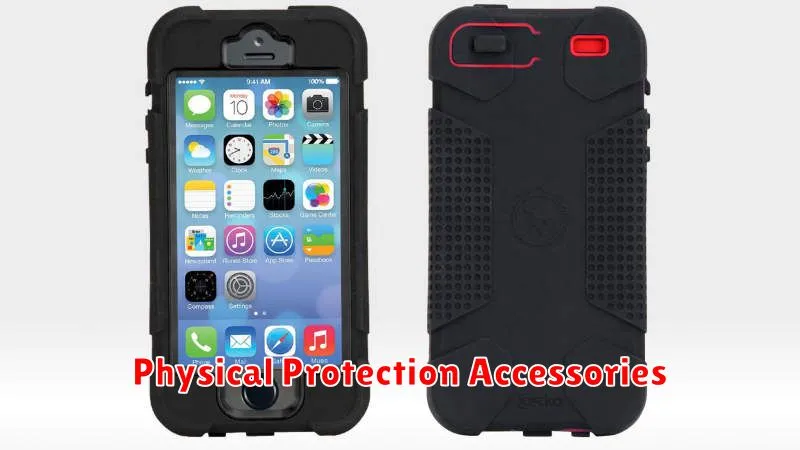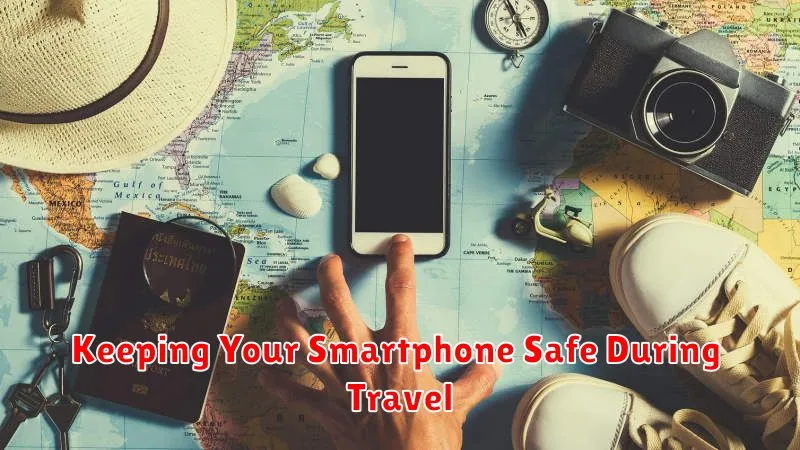Traveling can be an exciting experience, but it’s crucial to prioritize the security of your smartphone. These devices contain a wealth of personal information, from banking details to private photos, making them prime targets for theft. This article offers essential tips for keeping your smartphone safe during travel, ensuring you can enjoy your trip without the worry of compromising your valuable data. Learn how to safeguard your device against common travel threats like pickpocketing, scams, and unsecured Wi-Fi networks.
Discover practical smartphone security measures you can implement before, during, and after your travels. From activating essential security features like strong passwords and two-factor authentication to understanding the risks of public charging stations and utilizing reliable travel apps, this guide will empower you with the knowledge and tools to protect your smartphone and your peace of mind while exploring the world. Keeping your device safe while traveling is easier than you think with these simple yet effective strategies.
Using Secure VPN Connections
A Virtual Private Network (VPN) is a crucial tool for maintaining smartphone security while traveling. It creates an encrypted tunnel between your device and a remote server, shielding your online activity from prying eyes on public Wi-Fi networks. This added layer of security helps protect sensitive data like passwords, financial information, and browsing history.
When selecting a VPN, consider factors like strong encryption protocols (like AES-256), a no-logs policy to ensure your data isn’t stored, and a wide range of server locations. Connecting to a server in your home country can also help bypass geo-restrictions on certain websites or streaming services.
Remember to activate your VPN before connecting to any public Wi-Fi, especially in airports, cafes, or hotels. This proactive approach ensures your data remains protected from the moment you access the network. While a VPN enhances security, it’s essential to remain vigilant about other online safety practices.
Physical Protection Accessories

Investing in physical protection accessories can significantly reduce the risk of damage to your smartphone while traveling. These accessories offer a first line of defense against drops, bumps, and scratches that can occur during transit or while exploring new destinations.
Cases
A durable case is essential. Consider a robust case made from materials like TPU or polycarbonate for impact resistance. For more extreme environments, a waterproof and dustproof case can provide added protection.
Screen Protectors
Screen protectors are crucial for safeguarding your phone’s display from scratches and cracks. Tempered glass screen protectors offer superior protection compared to standard plastic film protectors.
Other Accessories
Additional accessories like phone holsters and wrist straps can provide convenient carrying options and prevent accidental drops while on the go.
Avoiding Public Charging Stations
Public charging stations offer a convenient way to top up your phone’s battery while traveling, but they can also pose a security risk. These stations can be tampered with to steal your data or install malware. Therefore, it is generally recommended to avoid using them whenever possible.
If you absolutely must use a public charging station, exercise extreme caution. Consider using a data blocker, which is a small device that allows charging but prevents data transfer. This can help protect your phone from juice jacking, a type of attack where malicious code is transferred to your device while it charges.
Another safer alternative is to carry a portable charger. Keeping your portable charger fully charged before your trip ensures you have a reliable and secure power source for your phone.
Backup Your Data Before Travel
Losing your smartphone while traveling can be a devastating experience, especially if it contains valuable data like photos, contacts, and important documents. Backing up your data before you embark on your journey is a crucial precautionary measure. This ensures that even if your device is lost, stolen, or damaged, your information remains safe and recoverable.
There are several ways to back up your smartphone data. Cloud services like iCloud or Google Drive offer automatic backups for a variety of data types. Consider enabling these features before you leave. Alternatively, you can manually back up your data to your computer.
Key data to back up includes:
- Photos and videos
- Contacts
- Documents
- App data (if possible)
By taking the time to back up your data, you can travel with peace of mind, knowing that your information is secure, regardless of what happens to your device.
Activating Remote Wipe Features

Losing your smartphone while traveling can be a devastating experience, especially if it falls into the wrong hands. Protecting your personal data is paramount. One of the most effective security measures you can take is enabling remote wipe features. This allows you to erase all data on your device remotely, rendering it useless to thieves and safeguarding your information.
Most modern smartphones offer built-in remote wipe capabilities. Typically, this feature is tied to your device’s operating system account. For example, on Android devices, it’s linked to your Google account, while on iOS devices, it’s associated with your iCloud account. Activating this feature is usually straightforward, often involving navigating to your device’s security settings and enabling the remote wipe option.
Once activated, should your device be lost or stolen, you can access a designated website or app from another device to initiate the wipe. This process typically requires you to log in with your associated account credentials for security verification. It’s crucial to familiarize yourself with the specific steps required for your device and operating system before embarking on your travels. This ensures you can act quickly and effectively in the event of a loss.

